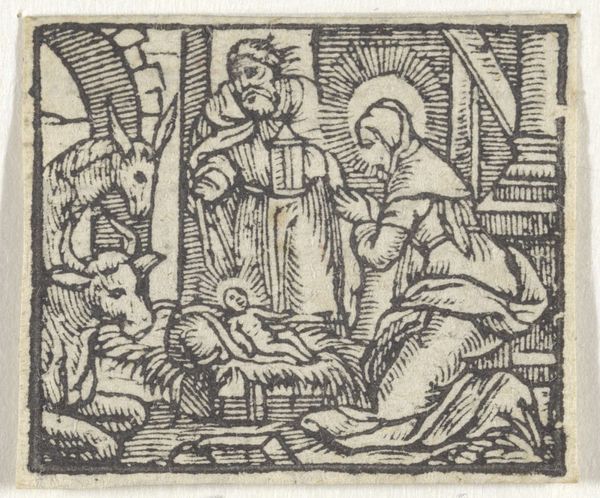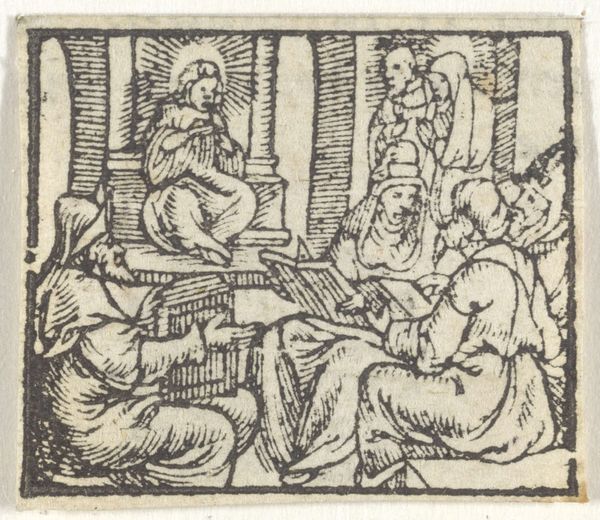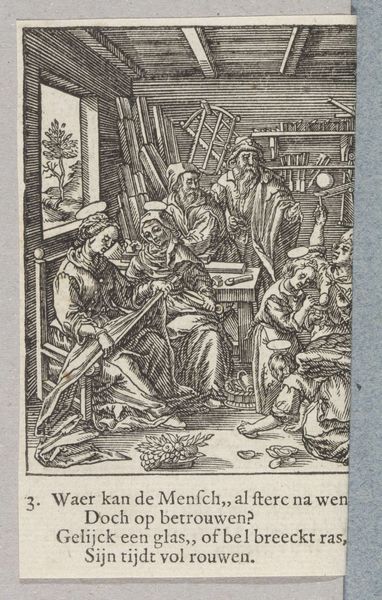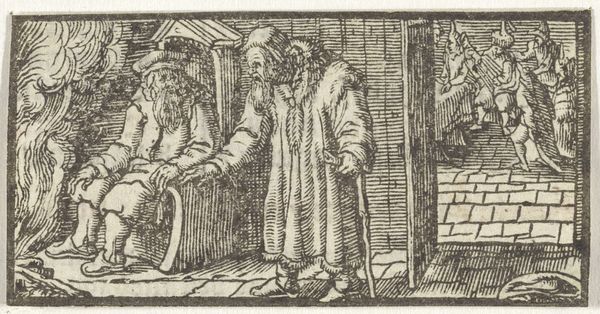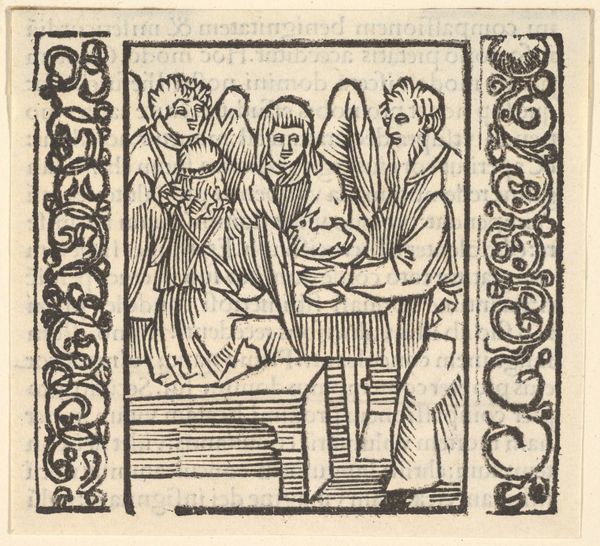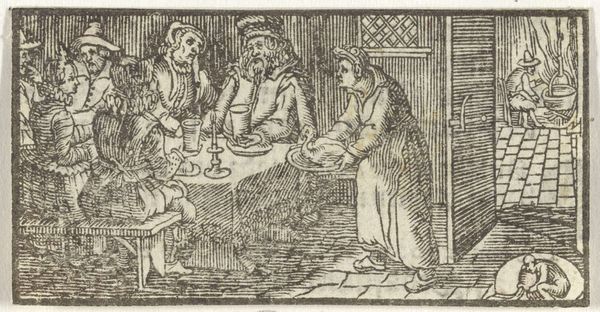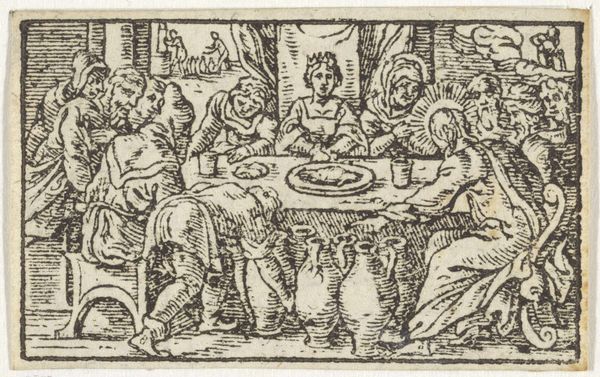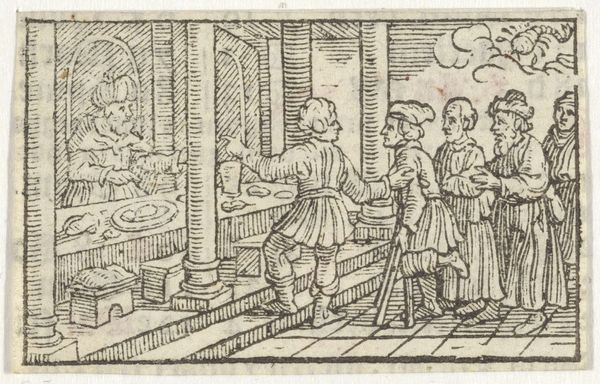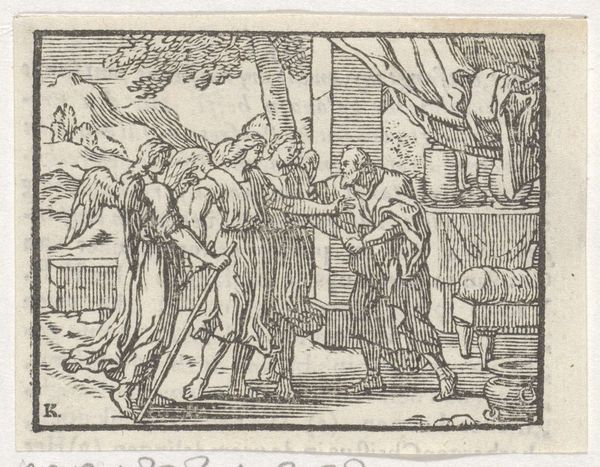
drawing, print, ink, woodcut
#
drawing
# print
#
figuration
#
ink line art
#
ink
#
woodcut
#
line
#
genre-painting
#
history-painting
#
northern-renaissance
Dimensions: height 31 mm, width 53 mm
Copyright: Rijks Museum: Open Domain
Curator: This is "Januari", a 17th-century print rendered as a woodcut in ink, from an anonymous artist. The distinct linearity immediately strikes me. What’s your initial take? Editor: Spare and pragmatic. The starkness, coupled with the subject matter, whispers of winter's functional necessities: labour, craft, a struggle against the elements and, perhaps, a battle with loneliness. Curator: Indeed. Observe how the composition, through the orchestration of contrasting dark and light fields, delineates two distinct domains within the confined space. One is devoted to manual work: the man, absorbed, perhaps mending tools; the other centers on domestic craft, as signified by the woman at her spinning wheel. Editor: The wheel feels particularly potent here, doesn’t it? Throughout so much visual culture, the spinning wheel is emblematic of fate, the turning of time, but also industry. She is not passively waiting but actively shaping the course of things through skill and industry. Curator: Note as well the division created through line. The architectonic structure creates spatial recession through a succession of oblique parallels and perpendicular intersections; in doing so, it creates pictorial tensions – each zone of action visually counterbalances. The artist has clearly adopted geometric order here to describe volume. Editor: I’m also drawn to what we can’t see in full. A figure lingers, half obscured at the entrance, and is this, maybe, a pagan icon hovering over them both? So much symbolic density, considering its relatively minimalist presentation. Even the hanging spoon speaks to provision and care. Curator: Your focus on symbols is spot-on. We see this stark woodcut capturing ordinary life of labouring and living. There is a profound visual integrity. Editor: Definitely, I found myself drawn in and left contemplating how these intimate spaces encapsulate an entire cultural landscape in just a few lines. Curator: Quite right. A testament to how visual codes and geometric forms shape our understanding of even the most quotidian scene.
Comments
No comments
Be the first to comment and join the conversation on the ultimate creative platform.
